
Elizabeth Ruth Grable was an American actress, pin-up girl, dancer, model and singer.

Preston Sturges was an American playwright, screenwriter, and film director.
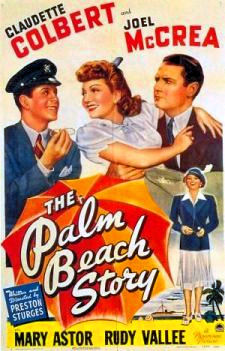
The Palm Beach Story is a 1942 screwball comedy film written and directed by Preston Sturges, and starring Claudette Colbert, Joel McCrea, Mary Astor and Rudy Vallée. Victor Young contributed the musical score, including a fast-paced variation of the William Tell Overture for the opening scenes. Typical of a Sturges film, the pacing and dialogue of The Palm Beach Story are very fast. The film was distributed by Paramount Pictures.

Vendetta is a 1950 American crime film based on the 1840 novella Colomba by Prosper Mérimée, about a young Corsican girl who pushes her brother to kill to avenge their father's murder.

Esther Howard was an American stage and film character actress who played a wide range of supporting roles, from man-hungry spinsters to amoral criminals, appearing in 108 films in her 23-year screen career.

Hail the Conquering Hero (1944) is a satirical comedy-drama film written and directed by Preston Sturges, starring Eddie Bracken, Ella Raines and William Demarest, and featuring Raymond Walburn, Franklin Pangborn, Elizabeth Patterson, Bill Edwards and Freddie Steele.

Unfaithfully Yours is a 1948 American screwball black comedy film written and directed by Preston Sturges, and starring Rex Harrison, Linda Darnell, Rudy Vallée and Barbara Lawrence. The film is about a jealous symphony conductor who imagines three different ways to deal with the supposed infidelity of his beautiful wife—murder, forbearance, and a suicidal game of Russian roulette—during a concert of three inspiring pieces of classical music. At home, his attempts to bring any of his fantasies to life swiftly devolve into farce, underscored with humorous adaptations of the relevant music. Although the film, which was the first of two Sturges made for Twentieth Century-Fox, received mostly positive reviews, it was not successful at the box office.

Down Argentine Way is a 1940 American musical film made in Technicolor by Twentieth Century Fox. It made a star of Betty Grable in her first leading role for the studio although she had already appeared in 31 films, and it introduced American audiences to Carmen Miranda. It also starred Don Ameche, The Nicholas Brothers, Charlotte Greenwood, and J. Carrol Naish.

Harry Hayden was a Canadian-American actor. He was a highly prolific actor, with more than 280 screen credits.
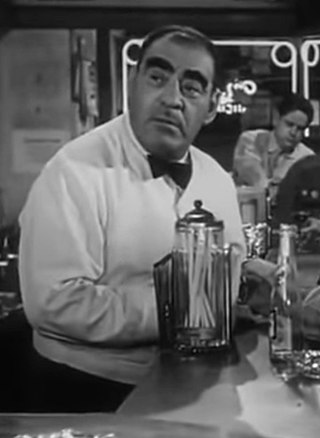
Dewey Robinson was an American film character actor who appeared in more than 250 films made between 1931 and 1952.
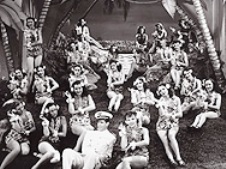
Gold Diggers in Paris is a 1938 Warner Bros. movie musical directed by Ray Enright with musical numbers created and directed by Busby Berkeley, starring Rudy Vallee, Rosemary Lane, Hugh Herbert, and Allen Jenkins.
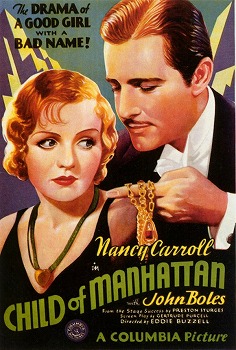
Child of Manhattan is a 1933 American pre-Code melodrama film based on the play Child of Manhattan by Preston Sturges, which was presented on Broadway in 1932. The film was directed by Edward Buzzell and written for the screen by Gertrude Purcell, and stars Nancy Carroll, star of musical comedies at Paramount, John Boles, and cowboy star Charles "Buck" Jones.

Fast and Loose is a 1930 American pre-Code romantic comedy film directed by Fred C. Newmeyer and starring Miriam Hopkins, Carole Lombard and Frank Morgan. The film was written by Doris Anderson, Jack Kirkland and Preston Sturges, based on the 1924 play The Best People by David Gray and Avery Hopwood. Fast and Loose was released by Paramount Pictures.
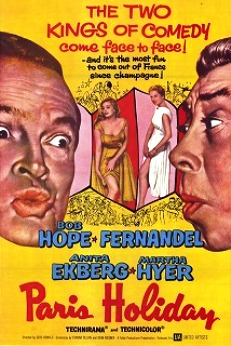
Paris Holiday is a 1958 American comedy film starring Bob Hope, which was directed by Gerd Oswald, and written by Edmund Beloin and Dean Riesner from a story by Hope. The film also features French comedian Fernandel, Anita Ekberg and Martha Hyer, and a rare appearance by writer/director Preston Sturges. The film was shot in Technirama and Technicolor in Paris and in the French village of Gambais.
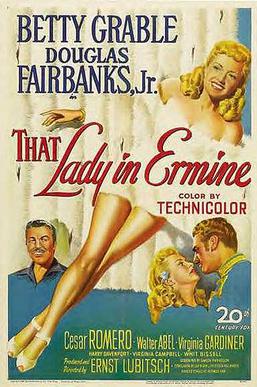
That Lady in Ermine is a 1948 American Technicolor musical film directed by Ernst Lubitsch. The screenplay by Samson Raphaelson is based on the 1919 operetta Die Frau im Hermelin by Rudolph Schanzer and Ernst Welisch.

The Shocking Miss Pilgrim is a 1947 American musical comedy film in Technicolor written and directed by George Seaton and starring Betty Grable and Dick Haymes.

Diamond Horseshoe is a 1945 American musical film starring Betty Grable, Dick Haymes and William Gaxton, directed and co-written by George Seaton, and released by 20th Century Fox. It was filmed in Technicolor in Billy Rose's Diamond Horseshoe, a nightclub located in the basement of the Paramount Hotel. The film's original score is by Harry Warren and Mack Gordon, introducing the pop and jazz standard "The More I See You".

Meet Me After the Show is a 1951 Technicolor musical film starring Betty Grable and released through 20th Century Fox. The film was one of Grable's last musical films for Fox during her box office reign of the past decade.
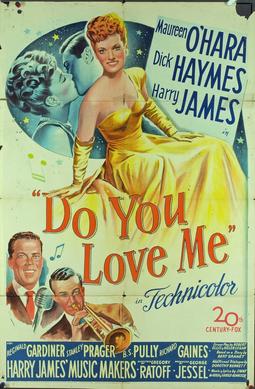
Do You Love Me is a 1946 American Technicolor musical romance film directed by Gregory Ratoff and starring Maureen O'Hara, Dick Haymes and Reginald Gardiner. The film also features band leader Harry James and his Orchestra. It was produced and distributed by 20th Century-Fox. Betty Grable makes a cameo at the end of the film. At the time Harry James was married to contracted Fox star Betty Grable.
Earl Felton (1909–1972) was an American screenwriter.



















